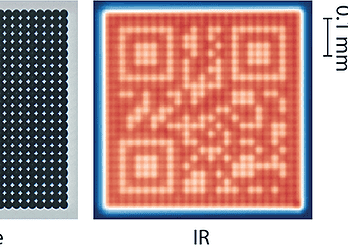
The humble barcode is so familiar and inconspicuous that by now, we don’t even notice it anymore. But the barcode changed the world. Inventories became more accurate and easy to track; the entire retail process became faster; queues became shorter; everything became much more efficient. Now, things are about to change once again.
A new generation of 2D barcodes is about to come. They’re not very unlike QR codes, but they can carry more information than existing barcodes, essentially adding a new dimension.
They can offer consumers a trove of data, like how sustainable a product is, what ingredients it contains, what allergens, how it can be recycled, and what’s the best-by date. This type of information can also enable sellers to identify faulty items and offer discounts for products close to their expiration date. It will allow brands and retailers to carry out all sorts of campaigns and will empower consumers to be more in control and more informed about what they buy.
But it won’t happen overnight.
Sunrise 2027
Nowadays, virtually all products have barcodes. A barcode is, in essence, a very simple thing: it’s a way to enable machines to access information very quickly. ‘True’ barcodes are one dimensional — they represent data by varying the widths, size, and spacings of parallel lines. These codes can be scanned with specialized readers.
But there’s only so much information you can squeeze into a 1D label. With 2D variants, you can add much more information. Instead of information only being horizontal, it can also be vertical, allowing more information to be represented.

This isn’t such a novel idea. There’s one type of 2D barcode we’re all familiar with: the QR code. We’ve all become much more accustomed with these 2D codes during the pandemic restrictions, where most restaurants started using QR codes as a shortcut to their menu. With smartphones becoming ubiquitous, reading QR codes has become easier than ever.
The new 2D barcode effort is promoted by GS1 US, the nonprofit standards organization that oversees barcode implementation. They call it Sunrise 27. In the US, existing barcodes will start to be supplanted by the new 2D type. It’s not clear how other countries will implement this change, but by 2027, only 2D barcodes will be accepted at registers globally.
This promises to be one of those things that seem small and inconspicuous but will almost definitely have a significant impact on our quality of life. So much of our society hinges on our retail efficiency, and enabling both sellers and buyers to access more information is very useful.




